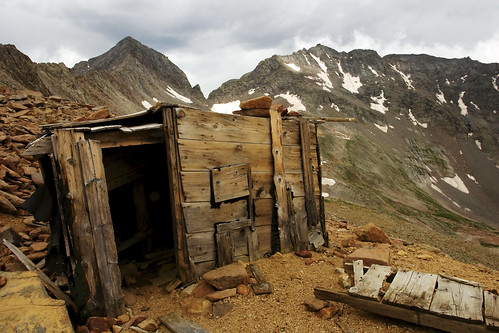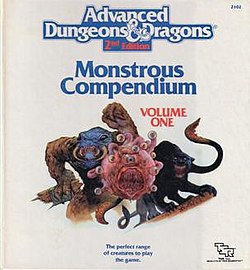Road
While traveling on a road, the Guide is not required. Typically events are more random while on the road, most encounters can be seen from a ways away, and seldom do staged ambushes occur. Though a wandering group of bandits may be disguised as travelers and after determining the party is a good target they may launch a surprise attack. However, most wanderer are merchants, patrols or even people that don't want to stop and chat.
Useful Skills: Diplomacy, Haggling and most interpersonal abilities are useful do to the number of travelers that are encountered. Perception and knowledge of rare plants might be handy as most commonly known fruits and berries get "picked over" by those wanting to conserve their rations.
Events: As previously mentioned, most come in the form of different types of travelers, possibly carrying cheap or rare goods, maybe news of the road ahead or news from the next settlement.
Rivers
These are similar in purpose to roads, but have many more options for ambushes, encounters, and other water based events.
Useful Skills: Navigation and watercraft experience are handy, as are local lore or the river or creature found in the area. If not the one responsible for navigation, then possibly crafting or other types of activities can be performed, or one could simply fish.
Events: Nearly anything can occur on a river, such as attacks from the water or the shoreline, to problems with the boat, to other nature events such as low or high water, that may cause travel to become more treacherous.
Trails
These provide much less difficult means of trail, but also the most likely place for an enemy to setup an ambush. Trails are less prone to respectable travelers, but this may very on the locations at either end of the trail. If these are fairly well traveled they will be likely to function similar to roads, less traveled or game trails will be treated closer the the terrain they are found in.
Useful Skills: Tracking and Perception are especially handy on trails, largely to determine what other creatures use the trail and how long ago they passed by. Skills involving the nearby terrain are equally handy, and if the trail is a common one, then the people-skills that are useful on a Road also come in handy.
Events: Again, almost anything can happen on a trail, from ambush to road type events to ones similar to the terrain that the trail cuts through. So it's important to be on ones toes when traveling on a trail.
Plains
The easiest to travel of the wilderness terrain types. and most common as well. This have miscellaneous pockets of forests, as well as being criss-crossed with roads, trails, as well as streams and rivers leading to lakes or ponds. Typically travels will be local folk, or animals, and dangers will likely have to be camouflaged, since visibility on the plains is so good.
Useful Skills: Tracking, Hunting, Foraging, Gathering and Perception are especially useful, as the opportunities to do so comes up quite frequent.
Events: Local travelers, shepherds, other hunters or gatherers, patrols and scouts both friendly and foe can all be encountered on the plains. Most dangerous creatures on the plains can be avoided by the party properly scouting the area, as visibility is so good (weather permitting).
Forest
Useful Skills: If it was useful on the Plains, then chances are it will be even more important in the Forest. With animal and plants as abundant as they are, anything dealing with these can be especially effective.
Events: Mostly events with local animal and creatures, that due to concealment may not be as easily avoided as the plains. In addition to animal related events, there are solitary traveler, hunters, or bandits and other creatures that have made the forest their home and do not wished to be bothered.
Deep Forest
These are especially dense and difficult to travel regions. You'll not find any wanderers this far in, creatures found here do like like most other types of creatures, and most often prefer solitude, which is why they are here. These area are often home to rare and exotic flora and fauna, and those home to especially rare finds for hunters and gatherers, they can also harbor some very dangerous situations for them as well.
Useful Skills: See Forest, in addition to those, anything dealing with rare/exotic plants and animals that prefer the conditions of solitude of the Deep Forest.
Events: Things here are like the forest, only more magical/mystical in nature, whether the source is creature, animal, plant or spirit. Also, events involving mysterious weather or ancient ruins or spirits would be much more likely in these untraveled lands.
Swamps
The dread of adventures, nothing saps the stamina or optimism out of a traveling band of heroes like a swamp does. Slow progress, poor visibility, nasty biting insects, constant pools of stagnant water hiding who knows what type of dangers. Most often avoided when possible, but when required adventured will reluctantly enter them. The most recluse and dangerous creatures are found here, and often will get the jump on the party.
Useful Skills: Swimming, Wilderness Survival, most skills involving plants or reagent gathering have uses here, especially since these areas are fairly rarely visited. Hunting, Tracking and Perception typically always have uses in the wilderness and Swamps are no exception. Due to the exceptionally difficult travel Endurance helps in Swamps, and due to gloom Awe can be useful in avoiding the disheartening affects in Tainted areas often found in Swamps.
Events: Swamps and Jungles probably have the most variety of events that can occur, there's lots of concealment and cover, creatures can hide in the water, plus nearly anything that could happen in the Forest or River can also happen in a Swamp.
Jungles
A hybrid terrain of Swamps and Deep Forest, they are typically only seen by adventurer on rare epic quests, unless the heroes are from areas where Jungles would be common. Jungles like swamps require a lot of endurance to travel through, and often the climate is as much of a foe as the strange and rare creatures found within.
Useful Skills: Jungles are essentially hot muggy Deep Forests with plenty of marshy pools of water, so in many respects the also combine Swamps with Forests, and have a large amount of overlap in skills with those terrains. Like Swamps, Endurance is a helpful skill to have in Jungles as well.
Events: As mentioned under Swamps, nearly everything can happen in Forest, Deep Forests, Swamps or Rivers can happen in a Jungle, typically with a moist exotic twist.
Desert
Useful Skills: Heat Resistance, Endurance, low encumbrance and light armor are all good things to consider when traveling in the desert. Local knowledge of flora and fauna are always helpful, but especially in the deep Desert there often aren't many plants around. Reagent knowledge can be handy as many earth based reagents may be found in Deserts by those with knowledge of them.
Events: Deserts bring many new types of events not seen in any other terrains, except Tundra (where the extreme cold has similar hazards). There are blinding sand storms and the more deadly shard storms. Elementals are more common in the Desert regions, and many of the indigenous species have the ability to bury themselves and surprise unsuspecting travelers. In addition to these the winds blow dunes from place to place and the constantly shifting terrain can randomly uncover ancient tombs and ruins that have been buried for centuries.
Hills
Common enough terrain seen by adventurer, but most try to stick to the trails and roads when traveling in hilly regions. Many times these are the precursory to mountains, though equally common they are found covering large areas of wilderness without their big brothers nearby. Hills are homes to many types of dangerous creatures, including ogres, trolls and giants.
Useful Skills: The strenuous nature of traveling up and down hills, Endurance is a good skill to have. Rope Use, Climbing and Atheletics can also come in handy.
Events: Some unique events that occur in Hills are miscellaneous things involving bridges that would normally save time, but the events can be anything from damaged bridge to missing bridge, which may involve repairing, trying your luck, or finding alternate routes. Events involving tunnels and caves are also fairly common to Hills, that don't occur in many other terrain types.
Mountains
These giants of the wilderness are avoided by adventures when at all possible, travel is extremely slow and perilous. The terrain and natural disasters can be just as dangerous as the creatures that make the mountains their home. Travel is most often on the trails and mountain passes that are well traveled by those seeking to get to the other side or to the next valley.
Useful Skills: Mountain travel involves essentially the same skills that come in handy in Hills, but items specific to mountaineering such as pitons and plenty of extra rope are also desired equipment when it come to off road mountain travel, which is dangerous and slow.
Events: Avalanches, falling rocks, attacks from above, blocked roads, tollways (possibly setup by the local village, group of bandits, or opportunist creature), ambushes are some of the events the party might see. Other things that may occur, narrow trails or fragile terrain that may result in dangerous falls is someone should slip. Winds storms and snow can also occur as well as altitude sickness if the party is climbing too rapidly.
Ocean
Most often this travel will be done aboard someone else's vessel, as few adventurer types have the skills, coin or desire to purchase the cost ships required to make safe and speedy travel across the great distances required, and I use the term "safe" in the most broad definition as possible. Huge and dangerous creature lurk beneath the surface, and travelers in these regions just hope that what ever is beneath the ship is sleeping or not hunger as they pass or head.
Useful Skills: Astronomy, navigation, seamanship, sailing, shipwright, swimming, athletics and Perception are all useful. It is probably wise to not wear heavy armor as well, in case the ship goes down or the hero falls (or is pulled) over board.
Events: Many weather related events could occur from no wind, to terrible storm. Also, being trapped aboard a ship can lead to many types of illness or even sea sickness if travelers are new to ocean travel. Then there's the many typed of encounters from harmless whale sighting to deadly sea creatures or private vessels. Possibly even a mid ocean sand bar or volcanic island...maybe with lost species native to it.
Barren Wastes
Some what of a cross between desert and hills is this forsaken wilderness type. There is literally almost nothing a live for hunters or gatherers to find, except the creatures and plants that are hunting the party. There is not such thing as a friendly or good encounter in places that fall under this type, the only good encounter is no encounter.
Useful Skills: Typically anything that holds true for Desert or Hill travel also applies to Barren Wastes, though they typically are some what flat, they are often broken up with large ravines or rocky regions that may require skills more suited for mountainous regions.
Events: Caves, tunnels and bridge related events similar to Hills can be encountered, if the heroes are traveling along the bottom of a ravine to avoid detection, then they could run the risk of falling rocks or attacks from above. These combined with Desert like heat or sometime Tundra like cold, depending on the zone the wasteland falls in, can also occur.
Arctic Tundra
Similar to the Desert, but at the opposite temperature extreme. This is a place a dreadful cold and piercing winds. Days and nights can last for months, plains of endless snow, oceans of ice in this where the sun never rises or sets can make navigation a challenge.
Useful Skills: Cold Resistance, Endurance, Wilderness Survival, and protective gear grant the most advantage in this terrain. Most often approaching creatures and be seen in the distance and avoided, however not all creatures need approach, some my buried in the snow waiting for travelers to approach them. Often weather can severely reduce travel speeds and visibility, luckily not many creatures are out traveling when conditions are this bad.
Events: Many unique events can occur on the Tundra that are no where else. Blizzards and the more deadly shard storm (similar to those in the desert) are some of the worst. Blades (large bladed vessels that skate on the ice) can be encountered or seen at great distances on the seas of ice. In the arctic mountains various caves systems or ruins can be buried or uncovered by the shifting snows. Also Ice bases elementals are some of the most common creatures on the Tundra.
Special Terrain Features
There are many special effects that can be applied to the terrain that the heroes are traveling through, here's a brief list of items that I came up with, as a basis to start from:
Ancient: There exists many ancient ruin site in the area, in which many often powerful creatures have made their lairs. These area can be have opportunities for heroic battles and vast riches, but also hold much danger and should be avoided by travelers not seeking the secrets within.
Blessed: The area is a spiritually sacred place due to some ancient enchantment or event. The source of the blessing may be something like a tree that sparkles in the light of a full moon, or a waterfall always shrouded in a shimmering rainbow (even at night?), or maybe ancient shrine favored by a deity. Whatever the source of the blessing, these areas typically enhance recovery and healing. The effect maybe only for those in the shrine, or possibly the enchantment reaches out for miles but strengthens the near one gets to the source. Only those with high Sense scores can detect the presence of the blessing.
Cursed: The area has been fouled by the presence of an unnatural creature, such as a Demon or Horror, or some unspeakably vile act that occurred here. The curse may prevent the recovery of health or worse actually drain life of those that spend too much time in the region. The curse my be lifted by slaying the creature or banishing it, or possibly performing a ritual or through the use of some divine artifact.
Mana Spire: This zone is rich with arcane energies, and spells may be cast sightly cheaper than the usual Energy cost to the caster. There is also an increased chance to find reagents here. The spire may be invisible to most being or may exist as a beacon of radiant energy streaming out of a fissure in the ground or ruins.
Mana Siphon: This zone is a arcane dampened area, in which arcane abilities cost more Energy than usual to the caster. There is almost a non-existence chance to find reagents while in this area.
Hostile: The Leader makes a Battle Check vs the DR of the Hostility, success means that party has managed to avoid the inhabitants of the terrain. Failure means that they have wandered into a group of the inhabitants.
Dangerous: The Leader must make a Perception Check to successfully steer the party, this can be deferred to the Scouts if the band is traveling with them. Failure indicated that the members each must individually make a Perception Check vs the DR of the danger. Some Journey Roles can modify this based on the type of danger.
Difficult: Use the Guide's Perception Check vs DR, and the amount they make or fail it by will adjust the DR of the Vitality Checks that all the party must roll individually. The amount they fail by will reduce their Energy by that amount.
Portal: The area contains a fixed portal to another location on the world (or maybe not), whether the portal is still functional is a mystery. If broken can it be repaired? All of these are interesting side trek quests that the party may attempt.
Wild: Hunter will be much more likely to kill a creature in this area, additionally those Scouting or Gathering are more likely to be ambushed by one of the natural predators found in this area as well.
These effects may be known before advancing into the Terrain if the Guide makes a Knowledge Check vs the DR of the Lore of the next Hex.





















